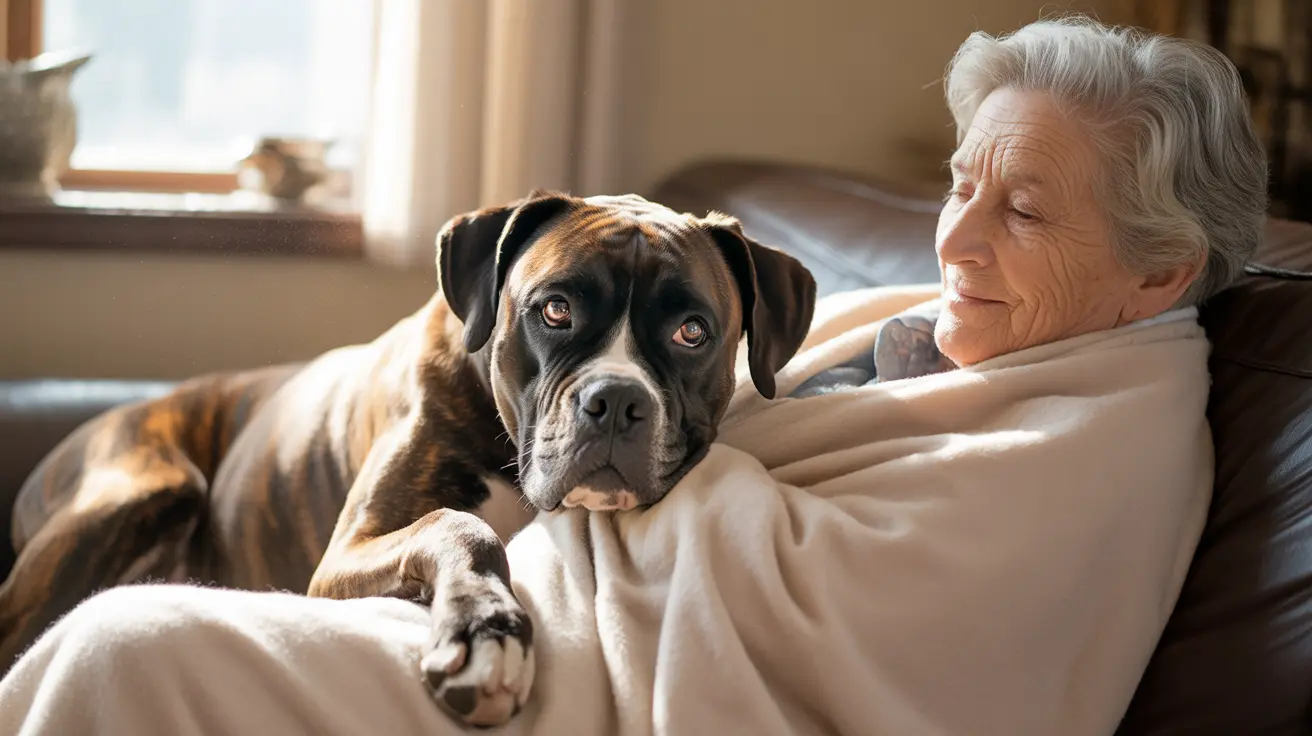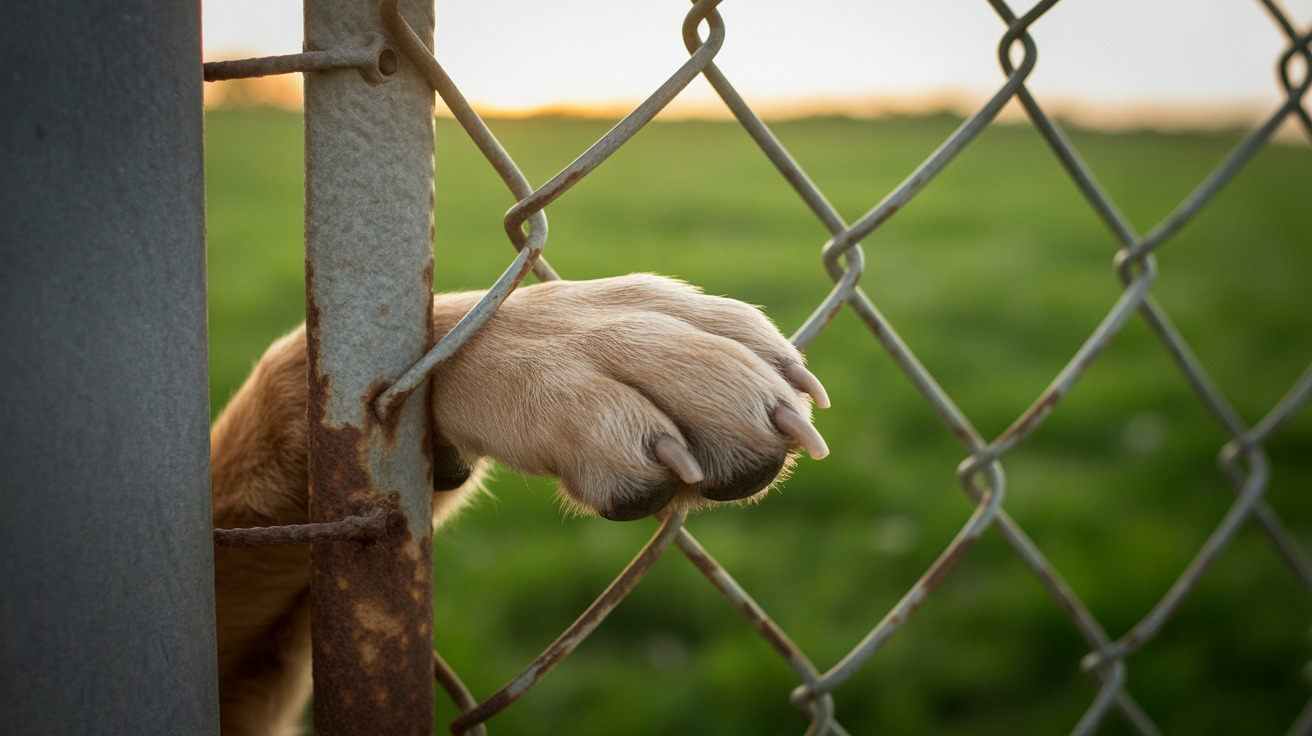Pet End-of-Life Planning and Funeral Options: A Compassionate Guide for Devoted Pet Owners
Losing a beloved pet is one of life's most heartbreaking experiences, yet it's an inevitable reality that every pet owner must face. While the thought of planning for your pet's death may seem overwhelming or premature, thoughtful preparation can provide peace of mind and ensure your cherished companion receives the dignified farewell they deserve. Many pet owners find themselves unprepared for the difficult decisions that arise during their pet's final moments, often defaulting to whatever options their veterinarian presents without fully understanding the alternatives available.
Pet end-of-life planning and funeral options have evolved significantly in recent years, offering compassionate alternatives to traditional disposal methods. From intimate home euthanasia services to professional pet crematoriums and memorial gardens, today's pet owners have access to meaningful ways to honor their companion's life and create lasting memories. This comprehensive guide will walk you through the essential aspects of preparing for your pet's death, exploring both emotional preparation and practical arrangements to help you navigate this difficult journey with confidence and love.
By understanding your options for memorial services, cremation, burial, and grief support, you can make informed decisions that align with your values and provide comfort during one of life's most challenging transitions. Whether you're facing an immediate decision or planning ahead for the future, this guide offers the knowledge and resources you need to ensure your pet's final chapter is filled with dignity, love, and peace.
Understanding Pet End-of-Life Care Options
When facing the loss of a pet, many owners are surprised to learn about the variety of end-of-life care options available beyond traditional veterinary disposal methods. Most veterinarians currently do not proactively inform pet owners about pet funeral service options or collaborate with such providers, often defaulting to leaving deceased pets with veterinary clinics for animal body disposal, which typically means the body is processed into animal meal or industrial fat.
However, alternative dignified options exist that can provide comfort and closure for grieving families. Professional pet funeral service providers offer comprehensive end-of-life care that honors the special bond between pets and their owners. These services include burial in pet cemeteries, individual or group cremations, and returning the ashes to the owner in beautiful urns or keepsake containers.
Reputable pet funeral companies guarantee the correct return of the pet's ashes and provide ongoing advice on memorial options and grave maintenance. This level of service ensures that your pet's remains are handled with the respect and dignity they deserve, while also supporting you through the grieving process with compassionate care and guidance.
Legal Considerations for Pet Burial and Memorial Options
Understanding the legal framework surrounding pet burial is crucial for making informed decisions about your pet's final arrangements. Burial of pets in private gardens is allowed under certain conditions in many jurisdictions, but specific regulations vary significantly by location. Generally, pet burial on private property requires sufficient depth—typically at least three feet deep—and must be positioned at an appropriate distance from water protection areas or public roads to prevent contamination and comply with local health codes.
Before choosing home burial, pet owners should research their local zoning laws, homeowners association regulations, and municipal ordinances. Some areas may prohibit pet burial entirely, while others may have specific requirements regarding burial containers, depth, and location on the property. It's also important to consider future implications, such as what happens to the burial site if you move or sell your property.
For those who prefer professional services, pet cemeteries operate under strict regulations that ensure proper handling and permanent memorial sites. These facilities offer the advantage of perpetual care, professional maintenance, and the comfort of knowing your pet's resting place will be preserved regardless of changes in your personal circumstances.
Emotional Preparation for Pet Loss
Preparing emotionally for your pet's death is perhaps the most challenging aspect of end-of-life planning, yet it's essential for finding peace and closure. Anticipatory grief—the feelings of sadness, anger, and guilt that arise when facing an impending loss—is a natural response that can actually help you process emotions and find meaning in your pet's life before they pass.
Spending quality time with your pet during their final days or weeks allows you to create lasting memories and express your love fully. Consider giving your dog a party or "best day" beforehand, celebrating by offering special treats or forbidden foods to spark joy and create special memories. This time together also provides opportunities to complete any "unfinished business," such as visiting favorite places, enjoying beloved activities, or simply sharing quiet moments of connection.
Living in the moment becomes particularly important during this time. Set aside caregiving tasks occasionally to simply be present with your pet, offering comfort through gentle touch, soothing words, and familiar routines. Remember that dogs' hearing is often the last sense to fade, so continued loving words remain meaningful even if your pet appears unresponsive due to illness or sedation.
Choosing the Right Moment: Quality of Life Assessment
One of the most difficult decisions pet owners face is determining when their beloved companion's quality of life has diminished to the point where euthanasia becomes an act of compassion rather than a premature goodbye. Recognizing the signs that your pet may be suffering can help guide this heartbreaking but necessary decision.
Key indicators that your pet may be experiencing significant decline include prolonged lethargy or disinterest, such as lying in one spot unusually long or showing no interest in toys, treats, or walks that once brought joy. When pets stop eating and drinking entirely, this often indicates organ shutdown and significant discomfort. Loss of coordination, including wobbly movement, disorientation, or convulsions, can signal neurological decline or severe pain.
Incontinence—the inability or unwillingness to relieve themselves appropriately—and labored breathing with uneven patterns or long gaps between breaths are also serious signs of distress. Many pets in their final hours will seek comfort from their human family members, looking for reassurance and companionship during their most vulnerable time.
Using a Quality of Life Scale, such as the HHHHHMM scale, can help evaluate your pet's pain levels, hunger, hydration, hygiene, happiness, mobility, and the overall balance of good versus bad days. This objective assessment tool can provide clarity during an emotionally charged time and help you make decisions based on your pet's welfare rather than your own reluctance to let go.
Planning the Farewell: Creating a Peaceful Goodbye
When the time comes to say goodbye, thoughtful planning can help ensure your pet's final moments are filled with love, comfort, and dignity. Scripting the setting and characters of the last chapter of your dog's story involves choosing a comfortable location for the euthanasia, such as your home or a favorite outdoor spot, and deciding who you want present during this intimate time.
Consider bringing the "props" that will help your pet feel comfortable and content—their favorite bed, beloved toys, or even playing soft, relaxing music that creates a peaceful atmosphere. Pre-paying at the beginning of the appointment can ease the emotional and logistical stress after the procedure, allowing you to focus entirely on being present with your pet.
It's important to understand what to expect during the euthanasia process. The procedure itself is smooth and painless when performed properly, though some dogs may urinate or defecate due to involuntary muscle relaxation. Occasionally, dogs may show agonal breathing or muscle twitching after passing, which is a normal physiological response and not distressing for the pet.
Allow your veterinarian to place an IV catheter, even though it may cause momentary discomfort. This ensures smooth and painless administration of euthanasia drugs. Similarly, accepting a pre-euthanasia sedative injection can help prevent prolonged or distressing reactions, such as vocalization or agonal breathing, making the process more peaceful for everyone involved.
Professional Pet Funeral Services and Cremation Options
Professional pet funeral services provide compassionate alternatives to standard veterinary disposal, offering various options to honor your pet's memory according to your personal preferences and beliefs. These services typically include individual cremation, communal cremation, and traditional burial in dedicated pet cemeteries.
Individual cremation ensures that your pet is cremated alone, with their ashes returned to you in an urn or container of your choosing. This option provides the highest level of assurance that you're receiving only your pet's remains, making it ideal for families who want to keep their pet's ashes, scatter them in a meaningful location, or create memorial keepsakes.
Communal cremation involves cremating multiple pets together, with the ashes typically scattered in a designated memorial garden rather than returned to individual owners. This option is more affordable while still providing a dignified alternative to standard disposal methods.
The step-by-step process of pet cremation begins with respectful transport of your pet's body to the crematorium facility. Professional staff handle all aspects of the cremation process with dignity and care, maintaining detailed records to ensure proper identification throughout the procedure. Individual cremations typically take several hours, after which the ashes are carefully processed and placed in the urn or container you've selected.
Memorial Options and Keepsakes
Creating lasting memorials for your pet can provide comfort and help keep their memory alive in meaningful ways. Memorial options range from traditional urns and burial markers to creative keepsakes that celebrate your pet's unique personality and the joy they brought to your life.
Urn types vary widely, from simple wooden boxes to elaborate ceramic or metal containers adorned with engravings, photographs, or decorative elements. Many pet owners choose urns that reflect their pet's personality or their own aesthetic preferences, creating a beautiful focal point for remembrance in their home.
For those who prefer to scatter their pet's ashes, consider meaningful locations such as favorite walking trails, beaches, or peaceful gardens where you shared happy times together. Some pet owners create garden memorials by mixing a small portion of ashes into soil where they plant flowers or trees in their pet's honor.
Physical keepsakes can include paw print impressions made before or immediately after death, locks of fur preserved in lockets or shadow boxes, or custom jewelry incorporating a small amount of cremated remains. Photography sessions during your pet's final days or professional memorial portraits can also create treasured keepsakes that capture your pet's spirit and beauty.
Supporting Yourself and Your Family Through Grief
Grieving the loss of a pet is a deeply personal process that requires patience, self-compassion, and often the support of others who understand the profound bond between humans and their animal companions. Acknowledging that your grief is valid and important is the first step toward healing, regardless of how others may perceive the loss of a pet compared to other types of bereavement.
Allow yourself to feel the full range of emotions that accompany loss—sadness, anger, guilt, relief, or even numbness. These feelings are all normal responses to losing someone you love deeply. Actively mourning through crying, talking about your pet, or expressing your emotions through writing or art can help process grief in healthy ways.
Keeping your pet's memory alive through photographs, video recordings, written tributes, or sharing stories about joyful times can provide comfort and help maintain the connection you shared. Many pet owners find solace in creating memorial albums, writing letters to their deceased pets, or establishing annual remembrance traditions.
Seeking support from others who understand your bond is crucial during this difficult time. Pet loss support groups, online communities, counseling services specializing in pet bereavement, or simply connecting with fellow pet owners can provide validation and practical coping strategies. Professional animal bereavement counseling is available for those who need additional support navigating complex grief or struggling with guilt over end-of-life decisions.
Preparing in Advance: A Practical Checklist
Creating a comprehensive end-of-life plan for your pet while they're still healthy can provide peace of mind and ensure thoughtful decision-making during emotionally challenging times. This advance planning allows you to research options thoroughly, discuss preferences with family members, and make arrangements without the pressure of immediate need.
Start by researching local pet funeral service providers, crematoriums, and pet cemeteries in your area. Read reviews, ask about their processes and guarantees, and visit facilities if possible to ensure they meet your standards for compassionate, professional service. Discuss options and costs with your family to ensure everyone understands and agrees with the planned arrangements.
Have detailed conversations with your veterinarian about your pet's breed, health risks, and likely end-of-life scenarios. Understand what symptoms might indicate declining quality of life and discuss your preferences regarding treatment options, hospice care, or euthanasia. Establish whether your vet offers in-home euthanasia services or can recommend trusted providers who do.
Consider creating an emergency contact list that includes your veterinarian, after-hours emergency clinics, and chosen pet funeral service provider. Keep important documents easily accessible, including vaccination records, medical history, and any advance directives you've established for your pet's care.
Financial preparation is also important, as end-of-life care and memorial services can involve significant costs. Research typical expenses for the services you might choose and consider setting aside funds specifically for this purpose or exploring pet insurance options that cover euthanasia and cremation.
Frequently Asked Questions
How far in advance should I start planning for my pet's end-of-life care?
It's never too early to begin discussing end-of-life options with your veterinarian and researching local pet funeral services. Starting these conversations while your pet is healthy allows for thoughtful decision-making without the emotional pressure of an immediate crisis. Many pet owners find it helpful to begin basic planning when their pet reaches senior status or receives a diagnosis of a terminal condition.
What's the difference between individual and communal pet cremation?
Individual cremation means your pet is cremated alone, ensuring that the ashes returned to you are exclusively your pet's remains. This process typically costs more but provides complete assurance of identification. Communal cremation involves multiple pets being cremated together, with ashes usually scattered in a memorial garden rather than returned to individual families. This option is more affordable while still providing a dignified alternative to standard disposal methods.
Is it legal to bury my pet in my backyard?
Pet burial in private gardens is allowed under certain conditions in many areas, but regulations vary significantly by location. Generally, burials must be at sufficient depth (typically at least three feet) and positioned at appropriate distances from water protection areas or public roads. Check your local zoning laws, homeowners association rules, and municipal ordinances before choosing home burial, as some areas may prohibit it entirely.
How do I know when it's time to say goodbye to my pet?
Key indicators include prolonged lethargy or disinterest in activities they once enjoyed, complete loss of appetite and water intake, loss of coordination or mobility, incontinence, labored breathing, and seeking comfort from family members. Using a Quality of Life Scale can help you objectively assess your pet's pain levels, happiness, and overall wellbeing. When suffering consistently outweighs enjoyment and quality of life, it may be time to consider euthanasia as a compassionate choice.
What should I expect during the euthanasia process?
The euthanasia procedure itself is smooth and painless when performed properly. Your veterinarian may place an IV catheter and administer a sedative beforehand to ensure maximum comfort. Some pets may urinate or defecate due to involuntary muscle relaxation, and occasional agonal breathing or muscle twitching after passing is normal and not distressing for the pet. The entire process is typically very peaceful, and you can continue speaking loving words to comfort your pet throughout.
How can I find a reputable pet funeral service provider?
Research local pet crematoriums and funeral services by reading online reviews, asking for referrals from your veterinarian or other pet owners, and visiting facilities in person when possible. Reputable providers should guarantee the correct return of your pet's ashes, maintain detailed identification procedures, offer clear pricing, and provide compassionate customer service. Ask about their cremation processes, identification protocols, and memorial options to ensure they meet your standards for professional, dignified service.
What memorial options are available for honoring my pet's memory?
Memorial options include traditional urns in various materials and styles, burial in pet cemeteries with markers or monuments, scattering ashes in meaningful locations, creating garden memorials with plants or trees, making keepsakes like paw print impressions or jewelry incorporating ashes, and establishing charitable donations in your pet's name. The best memorial choice depends on your personal preferences, beliefs, and the unique relationship you shared with your pet.
Conclusion
Planning for your pet's end-of-life care is one of the most loving gifts you can provide for both your beloved companion and yourself. While these conversations and decisions are never easy, thoughtful preparation ensures that your pet's final chapter is filled with dignity, comfort, and the deep love you've shared throughout their life. By understanding the full spectrum of options available—from in-home euthanasia and professional cremation services to meaningful memorial choices—you can make informed decisions that honor your pet's memory and provide lasting comfort for your family.
Remember that grief is a natural and necessary process that reflects the depth of love you shared with your pet. Be patient with yourself as you navigate this difficult journey, and don't hesitate to seek support from others who understand the profound bond between humans and their animal companions. Whether you're facing an immediate decision or planning ahead for the future, the knowledge and resources provided in this guide can help you approach pet end-of-life planning and funeral options with confidence, compassion, and peace of mind.






